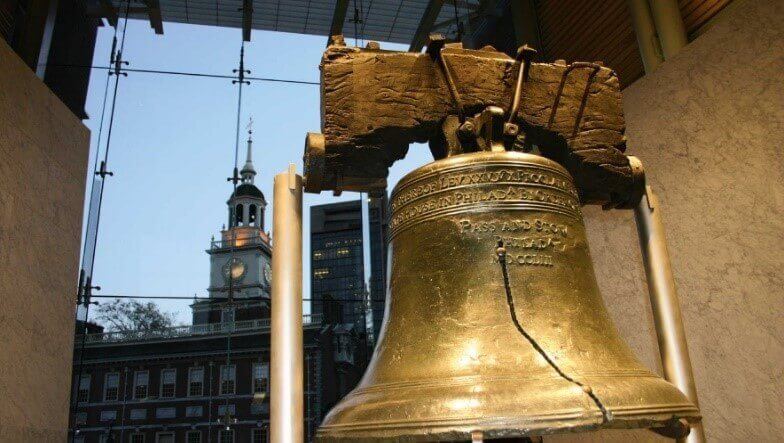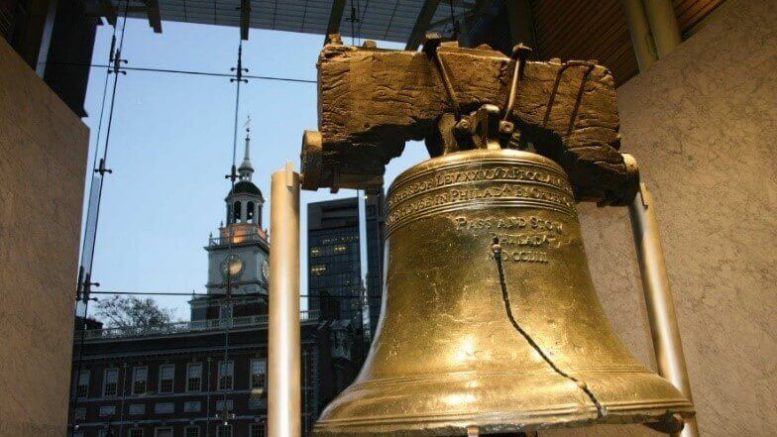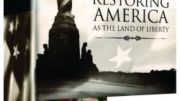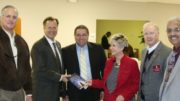
By Stephen McDowell | Providence Foundation
The Liberty Bell has been used as the logo of the Providence Foundation since near the time of our official founding in 1984. A verse from the Bible, Leviticus 25:10, is engraved on the top of the bell: “Proclaim liberty throughout all the land, unto all the inhabitants thereof. Lev. XXV, X”
The context of this Scripture is the jubilee year of liberty, which according to God’s instruction was to occur every 50 years and was marked by forgiveness of debts, the return of all lands to the original owners, and freedom to enslaved Israelites. Appropriately, this good fruit partially represents the outcome of our mission to spread Christian liberty throughout all the nations. As we teach Biblical principles for all spheres of life, the result will be men and nations who are liberated, blessed, and advancing. Or as Jesus taught, we disciple nations by teaching men to observe all He commanded (Matthew 28:18-20).
The Liberty Bell is currently on display in historic Philadelphia. It was first cast in England in 1752 by order of the Legislature of Pennsylvania in 1751 to commemorate the fiftieth anniversary of the Charter of Privileges signed by William Penn in 1701. This charter insured the freedom of Pennsylvania citizens, and so an appropriate scripture was selected to be placed on the bell — Lev. 25:10.
The Bell was hung in the Hall Tower at the State House in Philadelphia and cracked on its initial sounding in 1753. It was recast twice by Pass and Stowe before it had a clear and pleasant sound. As far as the Superintendents of the State House knew, this was the first time a colonial foundry had ever attempted to cast a bell, especially of this size. The bell weighed 2080 pounds, was twelve feet in circumference around the lip, seven and one-half feet around the crown, and three feet high.
The Liberty Bell contains the following inscription:
BY ORDER OF THE ASSEMBLY OF THE PROVINCE OF PENNSYLVANIA FOR THE STATE HOUSE IN PHILADELPHIA, 1752.
And above this:
PROCLAIM LIBERTY THROUGHOUT ALL THE LAND, UNTO ALL THE INHABITANTS THEREOF. LEV. XXV X
John Watson, in his Annals of Philadelphia, says of the motto on the bell:
That it was adopted from Scripture (Lev. 25, 10) may to many be still more impressive, as being also the voice of God — that great Arbiter, by whose signal providences we afterwards attained to that “liberty” and self-government which bid fair to emancipate our whole continent, and in time to influence and meliorate the condition of the subjects of arbitrary government throughout the civilized world! [1]
This inscription on America’s most venerated symbol reminds us that civil liberty is a result of Biblical truth infused in the life of a nation. Noah Webster stated:
Almost all the civil liberty now enjoyed in the world owes its origin to the principles of the Christian religion…. The religion which has introduced civil liberty, is the religion of Christ and his apostles, which enjoins humility, piety, and benevolence; which acknowledges in every person a brother, or a sister, and a citizen with equal rights. This is genuine Christianity, and to this we owe our free constitutions of government. [2]
The Liberty Bell was intended to be rung on public occasions, such as the meetings of the Assembly and courts. However, it was rung at numerous other times, especially for fires and church events, so much so that many people living nearby made complaints. On July 8, 1776, the Liberty Bell called together its most important meeting, the assembly of the citizens to hear the first public reading of the Declaration of Independence, and then led the celebration by its ringing.
On September 18, 1777, the Liberty Bell was taken to Allentown, Pennsylvania, to prevent the British from capturing it and melting it down for use as a cannon. It was hidden for almost a year in Zion Reformed Church.
For 82 years the Liberty Bell tolled important events in the beginning of America. On July 8, 1835, the Bell cracked while being rung in memory of Chief Justice John Marshall of Virginia who had died on July 6th.
The Liberty Bell reminds us of Christ’s mission to liberate men and nations, or as He said in Luke 4 when He started His ministry: “The Spirit of the Lord is upon Me … to proclaim release to the captives – to set at liberty those oppressed.” Since men will be liberated as they learn and obey God’s Word as it applies to all of life, the Providence Foundation will continue to train people in a Biblical worldview so they can transform the nations.
[1] John F. Watson, Annals of Philadelphia and Pennsylvania, Hart, etc. publishers, 1850, p. 398.[2] Noah Webster, History of the United States, New Haven: Durrie & Peck, 1833, pp. 273-274.
SOURCE: PROVIDENCE FOUNDATION
Stephen McDowell, the President of the Providence Foundation in Charlottesville and also President of the Foundation’s Biblical Worldview University. He has written numerous books and training courses on America’s Christian history and on the need to live by Biblical principles in order to prosper as a nation. He also serves as anAdvisory Board Member of the Virginia Christian Alliance





